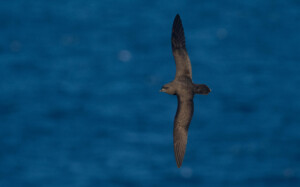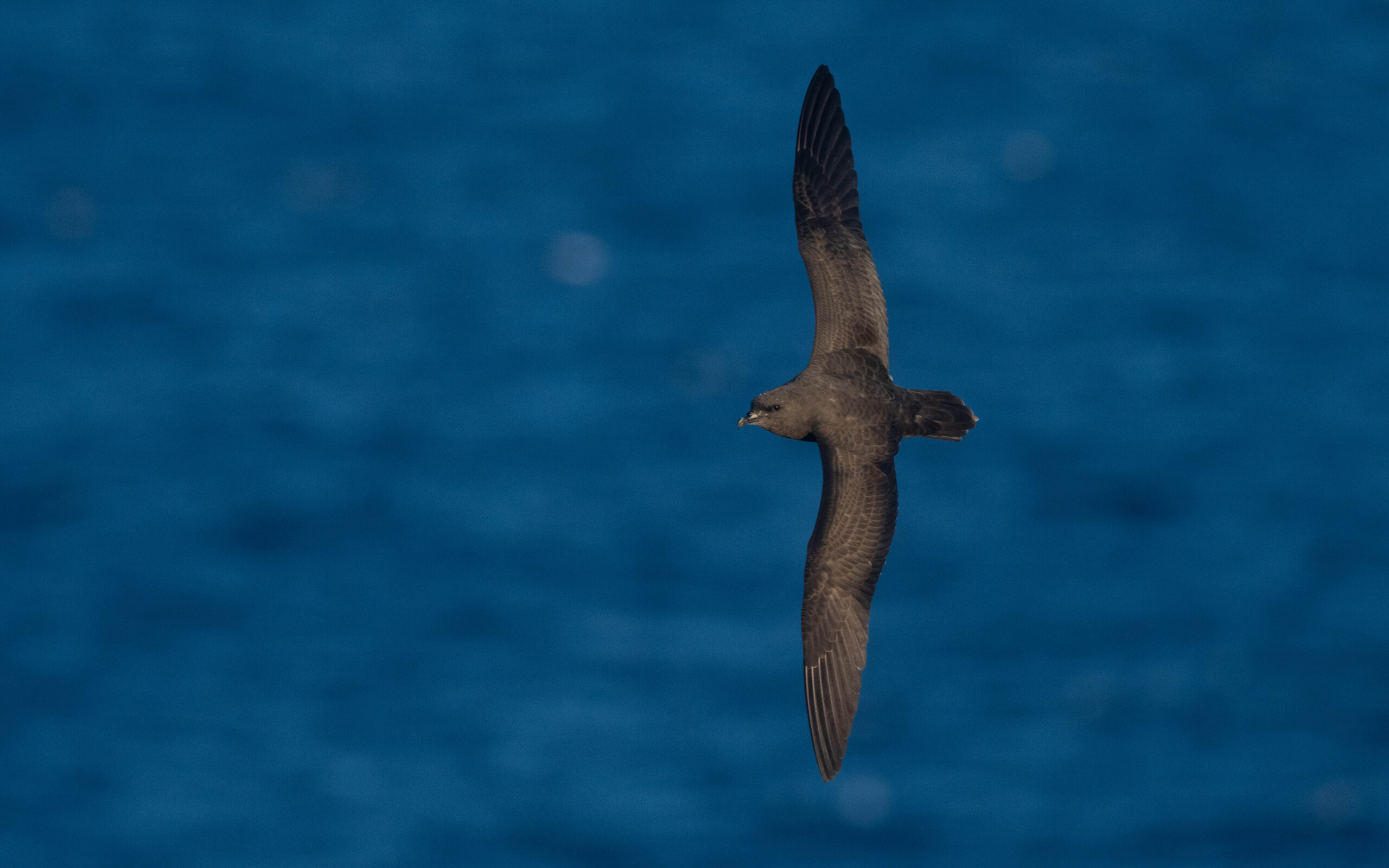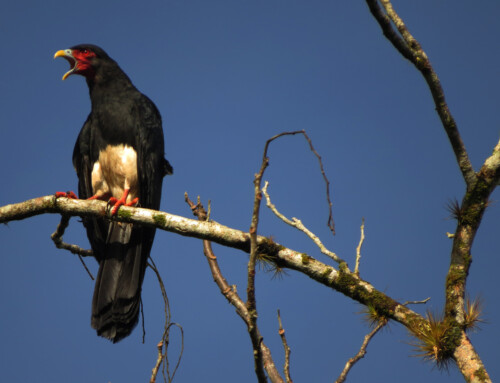 LINKED THESIS
LINKED THESIS
Drivers of ocean movement patterns in Round Island petrels. Franklin, K.A. 2023. PhD Thesis – University of East Anglia. VIEW
PhDone! After four and a half years, field work in some exciting places, a global pandemic, and a 3-month interlude on a placement with the RSPB, I graduated from my PhD.
As I’ve shared on this blog before, my BOU-funded PhD focused on the enigmatic population of tropical Pterodroma petrels on Round Island, Mauritius. The primary aim of my thesis was to explore how individual Round Island petrels do, and don’t, vary in their migratory journeys, and the consequences for the conditions experienced by individuals. I was fortunate to use a long-term geolocator tracking dataset collected by the Institute of Zoology (IOZ; Zoological Society of London), in collaboration with the Mauritian Wildlife Foundation (MWF) and National Parks and Conservation Service (NPCS; Government of Mauritius), as well as getting to visit Round Island myself, in order to answer my PhD questions.
These data revealed extraordinary levels of variation in Round Island petrel migratory strategies with migrations covering much of the Indian Ocean (Figure 1). However, we found no strong evidence for their unusual hybrid status or monsoon-driven seasonal environment to drive this variation. Repeat tracking of individuals across multiple years showed petrels to consistently migrate to the same place at roughly the same time in consecutive years, and despite the characteristically very different ocean conditions over which non-breeding petrels occur, petrel night-time activity patterns were remarkably similar and closely tracked the lunar cycle in all cases. My main field season on Round Island, where I installed a system of time lapse cameras, also proved a valuable tool for monitoring breeding phenology and nest success of tropical ground-nesting seabirds. Overall, the work in my thesis has contributed to the understanding of migratory systems and how they form and change, as well as expanding our knowledge of poorly studied tropical systems.

Figure 1 Non-breeding migration tracks (n=267) from all Round Island petrels (n=198) that feature within Kirsty’s PhD thesis. All individuals were tracked from Round Island, Mauritius (black diamond) between 2009 and 2018 (coloured by tracking year) using geolocator loggers.
Despite the majority of my PhD taking place during the pandemic, I feel I accomplished and gained so much. I’ve presented at multiple in-person and online conferences, been able to share and promote my research (with lots of help from the BOU), made many collaborations, published papers (see below), supervised three undergraduate and four postgraduate students, and had two field trips to Mauritius (with a third planned for 2024), to name a few. With support from the BOU and my supervisors, I was also able to join a BAS project in Iceland tracking Guillemots as well as taking a 3-month interlude on a seabird tracking placement with the RSPB; the latter likely the main reason I managed to get my current job as a Conservation Scientist, with the same lovely team, straight out of my PhD.

Figure 2 Kirsty monitoring the gannets of Bass Rock as part of her new job as a Conservation Scientist at the RSPB © Jude Lane.
I’m incredibly grateful to my supervisors (Jenny Gill, Malcolm Nicoll, Norman Ratcliffe, Ken Norris and Simon Butler) and the BOU for providing me with such a positive and supportive PhD experience. And of course, a big thank you to John and Pat Warham – I am so proud to be a part of the BOU family and funded through the Warham Studentship. It’s exciting to see the data generated from my PhD already being used in new collaborative studies, such as BirdLife’s recent identification of Marine Flyways. I’ve really enjoyed the challenging (tropical) nature of this project and hope to continue my involvement with the research on Round Island and these fascinating petrels.
Professor Jenny Gill (UEA) stated: “This project was an exciting opportunity to bring together researchers from three UK institutes (University of East Anglia, IOZ, British Antarctic Survey (BAS)) with shared interests in understanding bird migration. At the heart of the study were the amazing long-term data on individual migratory journeys of Round Island petrels collected by IOZ, MWF and NPCS, and we were very lucky to recruit such a brilliant student in Kirsty, who skilfully learned all the tools needed to analyse petrel tracking data, conduct meta-analyses of published bird tracking studies, developed a novel field study of remote monitoring of petrel breeding activity, and produced an excellent thesis and publications. Kirsty’s work has revealed key features of migratory behaviours that shed important light on how migratory ranges form and change, and the implications for individuals travelling to different parts of migratory ranges. Kirsty’s field study on Round Island also helped to demonstrate the potential for remote cameras and citizen scientists to monitor breeding seabirds in difficult-to-access locations. We are extremely proud of Kirsty’s research and the important contribution of her publications to the development of the field.”
Comments on the value of the Warham Studentship
Professor Jenny Gill (UEA) commented: “The studentship made extremely important and valuable contributions to the research group at UEA. Kirsty’s work has shed important light on the ecology and evolution of migratory systems, which will form a key platform for the development of future studies. Kirsty was also a brilliant member of our research group, providing lots of support and friendship to her cohort, supervising undergraduate student projects, and always being very generous with her analytical and presentational skills and knowledge. Kirsty also took on roles with BOU and The Seabird Group in the organisation and delivery of conferences, and her sharing of those experiences with the research group made excellent contributions to community and group development.”
Dr Malcolm Nicoll (IOZ) adds: “The studentship has also been a great asset to the research group at IOZ, which focuses on the ecology and conservation of marine and terrestrial island avian biodiversity. It has not only allowed us to expand our scientific understanding on the migration ecology and breeding phenology of the Round Island petrel but contributed to important conservation actions focusing on seabirds in the region and Pterodroma’s more broadly, including the identification of seabird movement corridors in the Northern Indian Ocean and the proposal to list Gadfly Petrels on the Convention of Migratory Species. Kirsty has rapidly become a valued member of the team through her enthusiasm for seabird research and willingness to take on additional roles that expanded her PhD experience. Over the last 3 years Kirsty has co-supervised MSc and MRes projects, provided technical support to the analyses of Pterodroma migration data from the Great Barrier Reef and Red-footed Booby movement data from the Chagos Archipelago, and participated in fieldwork in Mauritius GPS tagging Wedge-tailed Shearwaters.”
List of Publications
Franklin, K.A., Nicoll, M.A.C., Butler, S.J., Norris, K., Nakagawa, S., & Gill, J.A. 2022. Individual repeatability of avian migratory phenology: a systematic review and meta-analysis. Journal of Animal Ecology 91. VIEW
Franklin, K.A., Norris, K., Gill, J.A., Ratcliffe, N., Bonnet-Lebrun, A.S., Butler, S.J., Cole, N.C., Jones, C.G., Lisovski, S., Ruhomaun, K., Tatayah, V., & Nicoll, M.A.C. 2022. Individual consistency in migration strategies of a tropical seabird, the Round Island petrel. Movement Ecology 10:13. VIEW
Image credit
Top right: Round Island petrel Pterodroma sp. © Sam Napaul.




